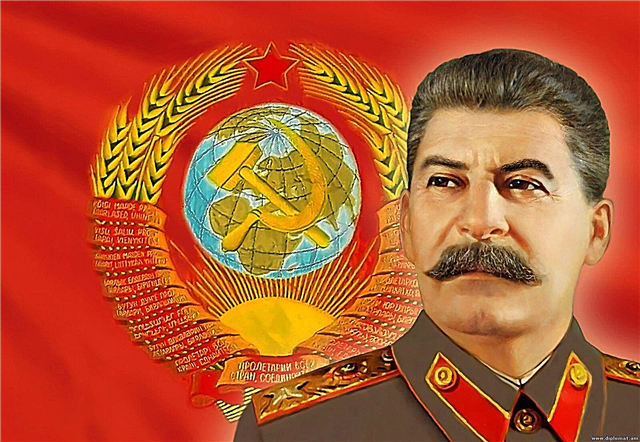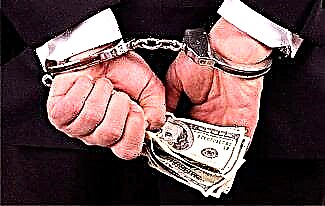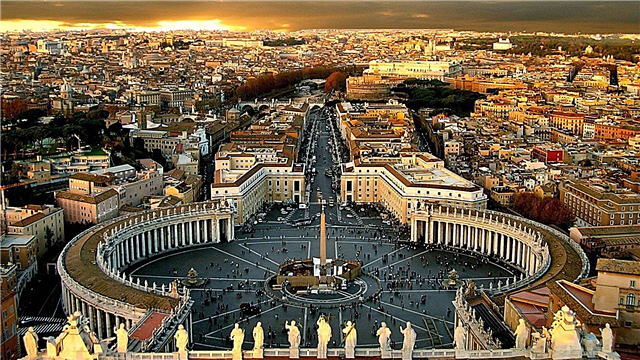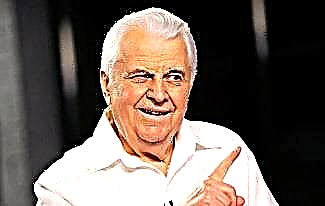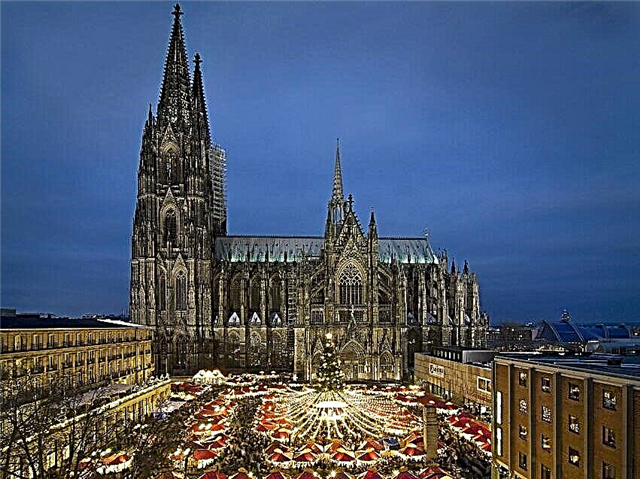The 18th century was a century of change. The Great French Revolution is recognized as the most important event of the century, but can the proclamation of Russia as an Empire, the formation of Great Britain or the proclamation of US independence be attributed to minor events? In the end, the French Revolution managed to end in a fizz before the end of the century, and Russia and the United States confidently joined the leading countries of the world.
How can you get past the industrial revolution? By the end of the 18th century, steam engines, weaving machines and blast furnaces were in full swing, which determined the development of industry for at least a hundred years in advance. In art, there was a hot rivalry between academicism, classicism and the newfangled baroque and rococo. Masterpieces were born in the dispute of artistic trends. Philosophical thought and literature developed, which marked the beginning of the Age of Enlightenment.
The 18th century, in general, was interesting in every way. Although our interest is unlikely to be shared by the French king Louis XVI, who did not live to see the new century only seven years ...
1. On January 21, 1793, a citizen Louis Capet, formerly known as King Louis XVI of France, was guillotined at the Place des Revolution in Paris. The execution of the king was deemed appropriate to strengthen the young republic. Louis was deposed in August 1792, and the Great French Revolution began with the successful storming of the Bastille on July 14, 1789.
2. In 1707, by mutual agreement, Scottish peers and members of the House of Commons dissolved their parliament and joined the English legislature. Thus ended the unification of Scotland and England into a single Kingdom of Great Britain.
3.October 22, 1721 Tsar Peter I accepts the Senate proposal and becomes the emperor of the Russian Empire. The foreign policy status of Russia after the victory over the powerful Swedish kingdom was such that no one in the world was surprised by the emergence of a new empire.
4. Nine years before the proclamation of Russia of Empires, Peter moved the capital from Moscow to the newly built Petersburg. The city served as the capital until 1918.
5. In the 18th century, the United States of America appears on the political map of the world. Formally, the United States dates back to July 4, 1776. However, this only signed the Declaration of Independence. The newly formed state still had to prove its viability in the war with the mother country, which it successfully did with the help of Russia and France. 
6. But Poland, on the contrary, ordered to live long in the 18th century. The lords, who were freedom-loving to suicide, got so sick of the adjacent states that the Commonwealth had to endure as many as three sections. The last of them in 1795 liquidated the Polish statehood.
7. In 1773, Pope Clement XIV dissolved the Jesuit order. By this time, the brothers had accumulated a lot of movable and immovable property, so the monarchs of Catholic countries, intending to profit, blamed the Jesuits for all mortal sins. The history of the Templars repeated itself in a milder form.
8. In the 18th century, Russia fought the Ottoman Empire four times. The first annexation of Crimea took place after the third of these wars. Turkey, as usual, fought with the support of European powers.
9. In 1733 - 1743, during several expeditions, Russian explorers and sailors mapped and explored vast territories of the Arctic Ocean, Kamchatka, Kuril Islands and Japan, and also reached the coast of North America.
10. China, which became the most powerful state in Asia, gradually closed itself off from the outside world. The "Iron Curtain" in the 18th century version did not allow Europeans to enter the territory of China, and did not let their subjects even to the coastal islands.
11. The war of 1756 - 1763, later called the Seven Years, could well be called the First World War. All the main European players and even American Indians quickly became involved in the conflict between Austria and Prussia. They fought in Europe, America, the Philippines and India. In the war that ended with the victory of Prussia, up to two million people died, and about half of the victims were civilians.
12. Thomas Newcomen was the author of the first industrial steam engine. The Newcomen steam engine was heavy and imperfect, but for the early 18th century it was a breakthrough. The machines were mainly used to operate mine pumps. Out of about 1,500 steam engines built, several dozen pumped mine water back at the beginning of the 20th century.
13. James Watt was more fortunate than Newcomen. He also built a much more efficient steam engine, and his name in the name of the power unit was immortalized.
14. The progress in the textile industry is amazing. James Hargreaves built an efficient mechanical spinning wheel in 1765 and by the end of the century there were 150 large textile factories in England.
15. In Russia in 1773, an uprising of the Cossacks and peasants broke out under the leadership of Yemelyan Pugachev, which soon escalated into a full-scale war. It was possible to suppress the uprising only with the help of regular army units and bribing the top of the rebels. 
16. Contrary to the widespread misconception that after being defeated by Peter I, Sweden did not fight with anyone and became a prosperous neutral country, Sweden fought twice more with Russia. Both wars ended in nothing for the Swedes - they failed to recover what was lost. Both times the Scandinavians were actively supported by Great Britain.
17. In 1769-1673 famine broke out in India. It was not caused by a bad harvest, but by the fact that officials of the East India Company bought food from the Indians at monopoly low prices. Agriculture collapsed, resulting in the death of 10 million Indians.
18. 8 supreme rulers managed to visit the throne of the Russian Empire in 79 years of the 18th century. The monarchs observed gender parity: the crown was worn by 4 emperors and 4 empresses.
19. The beginning of the 18th century in art passed under the sign of the baroque style, in the second half the rococo gained popularity. To put it very simply, lightness and frivolity have replaced the heavy imitation of wealth and wealth.  Baroque
Baroque 
Rococo
20. In the 18th century, such books as Gulliver's Travels (Jonathan Swift), Robinson Crusoe (Daniel Defoe) and The Marriage of Figaro (Beaumarchais) were published. Diderot, Voltaire and Rousseau are thundering in France, Goethe and Schiller in Germany.
21. In 1764 the Hermitage was founded in St. Petersburg. The collection of the museum, which began as the personal collection of Catherine II, grew so rapidly that by the end of the century two new buildings had to be built (no joke, almost 4,000 paintings), and the Hermitage became one of the largest museums.
22. The 33-year epic of the construction of St. Paul's Cathedral in London is over. The official opening took place on the birthday of the chief architect Christopher Wren on October 20, 1708.
23. The British, or rather, now the British, began to colonize Australia. Rebellious Americans no longer accepted convicts, and the prisons of the metropolis were replenished with great regularity. Sydney was founded on the eastern coast of Australia in 1788 to dispose of the convict contingent.
24. Top 5 best composers of the 18th century: Bach, Mozart, Handel, Gluck and Haydn. Three Germans and two Austrians - no comment about "musical nations".
25. Lack of hygiene in those years has already become the talk of the town. The 18th century brought rid of lice - mercury! Indeed, mercury effectively killed insects. And a little later, and their former carriers.
26. Russian mechanic Andrey Nartov in 1717 invented the screw-lathe. After his death, the invention was forgotten, and now the Englishman Maudsley is considered the inventor.
27.The 18th century gave us an electric battery, a capacitor, a lightning rod, and an electric telegraph. The first toilet with a flush also hails from the 18th, like the first steamer.
28. In 1783, the Montgolfier brothers made their first balloon flight. A man sank under the water before he rose into the air - a diving bell was patented back in 1717.
29. The century was rich in the achievements of chemistry. Hydrogen, oxygen and tartaric acid were discovered. Lavoisier discovered the law of conservation of mass of substances. Astronomers also did not waste time: Lomonosov proved that Venus has an atmosphere, Michell theoretically predicted the presence of black holes, and Halley discovered the motion of stars.
30. The century ended very symbolically with the fact that in 1799 Napoleon Bonaparte dispersed all the representative bodies in France. After a terrible bloodshed, the country actually returned back to the monarchy. It was officially proclaimed in 1804.


